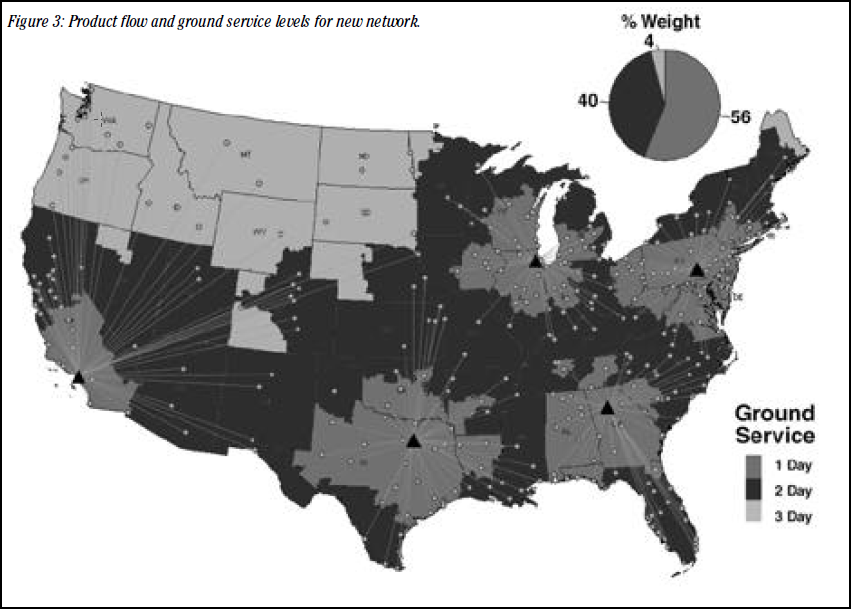Network design is an important capability for 3PLs (Third Party Logistics providers).
A Nov 2011 Inbound Logistics article on picking a 3PL partner listed “Optimization” as #2 on the list. A big part of optimization for a 3PL is network design. That is, a 3PL needs network design capability to help their customers run a better supply chain.
As an example, Ed Melching, Director of Global Logistics for Navistar stated in an Inbound Logistics article that the reason they selected Menlo as a 3PL partner was their “global coverage, cross-network planning, and optimization capabilities.”
One such 3PL, Fidelitone, issued a press release discussion their use of network design tools (ILOG’s LogicNet Plus XE in this case):
“Based on customer order data, we were able to use ILOG to run several scenarios and analyze the geographic impact multiple locations would have on service and cost,” explained Chuck Perry, director, customer solutions for Fidelitone. “This fact-based analysis shifted the client’s assumptions and created a 15- to 20-percent reduction in cost for them. Additionally, the fact based nature of the analysis enables us to be more competitive with pricing as our confidence level in the analysis has proven true with each application of the technology…”
“…This is another great example of our continuous commitment to investing in technology and tools that lead to process improvement for our customers,” said Chuck Perry, director, customer solutions for Fidelitone. “By automating critical decisions like determining the most cost-effective solutions for managing a supplier network, we can help clients reduce costs and increase speed to market easily and more accurately.”
Clearly, having this capability is important to a 3PL.


